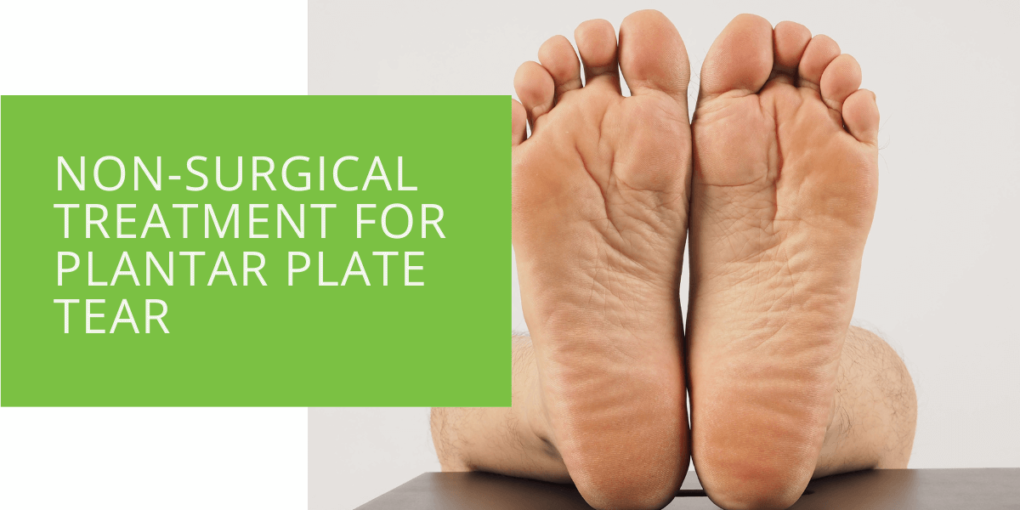Non-Surgical Treatment for Plantar Plate Tear
The foot and ankle are crucial in our daily activities, providing stability and support. However, injuries like a plantar plate tear can significantly affect function and cause discomfort in the ball of the foot. While surgery is sometimes necessary, non-surgical treatment options are often the first line of defense in managing plantar plate tears. This article will explore various non-surgical approaches to treat this condition and promote healing effectively.
Understanding Plantar Plate Tear
The plantar plate is a ligament located on the bottom of the foot, connecting the metatarsal bone to the toe's base. Its primary function is to stabilizes the metatarsophalangeal joint, preventing excessive movement and deformity. However, due to overuse, trauma, or joint instability, the plantar plate can become injured, resulting in a tear.
Plantar plate tears commonly occur in the second toe, leading to significant pain, swelling, and even joint dislocation. Recognizing the symptoms and seeking an early diagnosis from a podiatrist is crucial to prevent further damage and complications.
Diagnosis of Plantar Plate Tear
Diagnosing a plantar plate tear typically involves a comprehensive evaluation by a podiatrist. The healthcare professional will conduct a physical examination, assessing the affected area for tenderness, swelling, and joint instability. In some cases, advanced imaging techniques like MRI may be employed to obtain detailed images of the foot structures and confirm the diagnosis.

Non-Surgical Plantar Plate Tear Treatment Options
Rest and Activity Modification
Resting the foot is essential in promoting the healing process. Avoiding activities that exacerbate pain and placing undue stress on the foot is crucial during recovery. Your podiatrist may guide activity modification and recommend temporary restrictions to allow the plantar plate tear to heal properly.
Supportive footwear, such as shoes with a wide toe box and adequate cushioning, can help alleviate discomfort and provide stability. Additionally, orthotic inserts specifically designed to offload the affected area and support the arch can be beneficial in relieving symptoms and preventing further injury.
Physical Therapy and Rehabilitation
Physical therapy is vital in the non-surgical management of plantar plate tears. A skilled physical therapist can design a tailored rehabilitation program to address the underlying causes of the injury and strengthen the foot muscles. Specific exercises and stretches may be prescribed to improve foot stability, enhance range of motion, and promote healing.
Through targeted exercises, physical therapy aims to restore the balance and functionality of the foot, reducing the risk of recurrent plantar plate tears. Compliance with the recommended exercise regimen is essential for optimal recovery.
Immobilization and Bracing
In cases where the plantar plate tear is severe, or the joint instability persists, immobilization techniques can be employed to protect and support the affected area. Taping, splinting, or casting may stabilize the foot, allowing the ligament to heal without further strain or injury.
Orthotic devices or braces may also be recommended to provide additional support and stability. These custom-fitted aids can help redistribute pressure, reduce pain, and prevent excessive movement that could aggravate the plantar plate tear.
Medications and Injections
Your podiatrist may suggest over-the-counter non-steroidal anti-inflammatory drugs (NSAIDs) to manage pain and inflammation associated with plantar plate tears. These medications can help alleviate discomfort and reduce swelling, promoting a more comfortable healing process.
In some cases, corticosteroid injections may be considered to provide targeted relief by reducing inflammation around the plantar plate tear. However, it's important to note that corticosteroid injections should be carefully evaluated and administered by a qualified healthcare professional, as there are potential risks and side effects associated with this treatment option.

Extracorporeal Shockwave Therapy (ESWT)
Extracorporeal Shockwave Therapy (ESWT) is a non-invasive treatment modality that has shown promising results in promoting the healing of plantar plate tears. This procedure involves the application of high-energy sound waves to the affected area, stimulating the body's natural healing response.
ESWT helps to increase blood flow, accelerate tissue repair, and reduce pain and inflammation. It is typically performed as an outpatient procedure and may require multiple sessions for optimal results. Your podiatrist will determine if ESWT is a suitable treatment option based on your plantar plate tear's severity and specific characteristics.
Recovery and Rehabilitation
Once treatment is initiated, recovery from a plantar plate tear involves a comprehensive approach that combines rest, rehabilitation, and preventive measures. Following your podiatrist's instructions closely is important to ensure optimal healing and prevent recurrence.
During recovery, a gradual return to physical activities and sports is recommended. This allows the foot to regain strength and flexibility while minimizing re-injury risk. Your podiatrist may provide guidelines on transitioning back to normal activities and recommend appropriate footwear or orthotics to support the healing process.
Long-term management strategies for plantar plate tears include maintaining a healthy weight, practicing proper foot care, and wearing suitable footwear. Regular check-ups with your podiatrist can help monitor the condition and address any concerns or signs of instability.
Conclusion
Non-surgical treatment options for plantar plate tears offer an effective and conservative approach to managing this common foot condition. Individuals with plantar plate tears can alleviate pain, promote healing, and restore foot stability by seeking timely diagnosis and implementing a comprehensive treatment plan.
Rest, activity modification, physical therapy, immobilization techniques, medications, and advanced therapies like ESWT provide valuable tools in the non-surgical management of plantar plate tears. Collaborating closely with a knowledgeable podiatrist ensures a personalized treatment plan that addresses individual needs and promotes optimal recovery.
If you're experiencing pain, swelling, or instability in the ball of your foot, consult a qualified podiatrist for a thorough evaluation and appropriate treatment recommendations. Remember, early intervention and non-surgical approaches can often yield successful outcomes in treating plantar plate tears, allowing you to regain comfort and enjoy your everyday activities.

